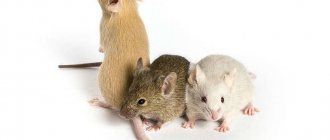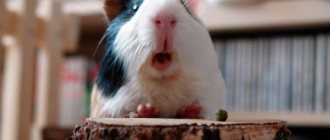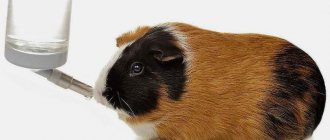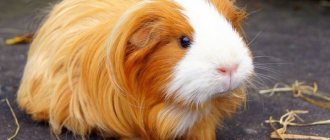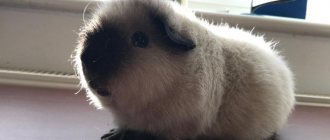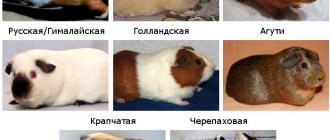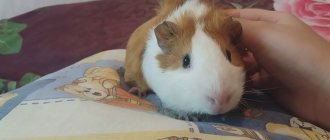Rodents are the most numerous order among all mammals: they account for more than 42% of species. Representatives of the order are present literally everywhere - from the Arctic tundra, where they live and breed under the snow (for example, lemmings), to hot and dry deserts (gerbils). Some glide through the air from tree to tree (flying squirrels), only occasionally descending to the ground, while others, on the contrary, spend their entire lives in the labyrinths of underground passages (mole rats). Some have webbed feet and are semi-aquatic (muskrats), often constructing complex engineering structures to regulate water levels (beavers), while others do not know what water is at all (gundi).
What are rodents?
Of all mammals, the order of rodents is the most numerous. They live on almost all continents of our planet. They are absent only in Antarctica and on some oceanic islands.
Animals can differ from each other in every possible way in size, color, shape of the head and other parts of the body, as well as the thickness of the fur. The main common difference for all types of rodents is a pair of large long incisors at the bottom and top. These teeth grow throughout life, gradually grinding down on solid food. Another characteristic feature is diastema - the gap (in place of fangs) between the incisors and the remaining teeth.
Animals inhabit steppes and forests, mountainous areas, river valleys and deserts. They can lead an underground and semi-aquatic lifestyle, and some have even mastered the air (flying squirrels). Rodents feed mainly on plant foods, but some species eat insects, worms, small vertebrates and other animals.
How are farmers harmed?
Mice, like many other rodents, cause a lot of damage to farms. Here's why mice are dangerous:
- mice carry dangerous diseases (typhoid, plague, salmonellosis, etc.);
- they leave their excrement wherever they run and climb (various infections are also transmitted to people through feces);
- chew wires, furniture, walls and other household items;
- Mice are dangerous for the garden: they spoil the harvest (they gnaw the bark of fruit trees and their roots, eat the harvest);
- They eat the feed of farm animals and leave their excrement in it, which leads to food spoilage.
Learn about ways and methods of dealing with mice in the country and at home.
Types of rodents
The development of various ecosystems also influenced the diversity of animal characteristics. Now about 2277 of their varieties are known to humanity. Digging and underground-dwelling species have a round, ridged body shape and developed claws (mole rats). Mobile rodents, especially those that move by jumping, have a more muscular body and long, strong limbs (jerboas, jumpers, gerbils).
The sizes of these mammals range on average from 5-6 to 50 centimeters. Among the smallest rodents are the Balochistan jerboa, the northern dwarf hamster, and the little shrew. Their sizes start from 3-3.5 cm.
Large rodents are porcupines, beavers, cane rats, bristly rats, and hutias with sizes of 50-100 cm. The largest representative of the order is considered to be the capybara. The animal reaches a length of 1 to 1.3 meters and a height of up to 60 cm.
Capybara
The world's largest rodent is the capybara, which lives throughout Brazil and neighboring countries. This barrel-shaped South American animal measures 3.5 to 4.4 feet in length and weighs 77 to 146 pounds. In Venezuela, capybara meat is served at the table. In the same region, fossils of prehistoric rodents that were much larger were found, including Phoberomys pattersoni (14 feet long), which scientists estimate weighed between 550 and 1,500 pounds.
Interaction with people
For humans, rodents can be both extremely useful and dangerous animals. They carry leptospirosis, salmonellosis, toxoplasmosis and other infections. Their exposure to the plague was a real disaster for the inhabitants of medieval cities.
Despite this, various types of rodents often served as a source of food and materials for clothing. So, squirrels, badgers, chipmunks, and chinchillas have always been hunted for their fur. Due to their small size, unpretentiousness and ability to reproduce quickly, the animals are used for scientific research and experiments.
Some rodents have also learned to benefit from human presence. Mice and rats became synanthropes - species that accompany people. They settle near human settlements, taking advantage of all the advantages of such proximity.
Some representatives of the detachment captivated us with their appearance so much that we decided to shelter them. This is how domestic rodents appeared: mice, hamsters, rats, degus, chinchillas, pigs, gerbils. Some even tame squirrels and jerboas. Most of these animals do not live long - from 2 to 7 years. A real long-liver among domestic rodents is the chinchilla. She lives up to 20 years.
Photo
Read on our website interesting articles about country pests: moles, gophers, hamsters.
At all times, mice lived next to humans and caused damage to the household. In order to protect yourself and your loved ones from diseases and protect property from damage, you should regularly take measures to get rid of these pests.
Chipmunks
The chipmunk rodent belongs to the squirrel family. They differ from other members of the family by five dark stripes on the back. Almost all 25 species of these rodents inhabit exclusively North America. Outside its borders, only the Asian or Siberian chipmunk lives. Distributed from the taiga regions of Eurasia (including the Russian Far East, the Kamchatka Peninsula, the islands of Hokkaido and Sakhalin) to China.
These are small rodents up to 15 centimeters in length. They are densely covered with brown or red-brown fur. On the back, black stripes alternate with gray or white. The tail of chipmunks is fluffy and grows almost the size of the owner (up to 12 cm).
Chipmunks are not aggressive and can quickly get used to humans. They are excellent tree climbers, which often saves them from terrestrial predators and helps them search for food. But they arrange housing underground. The burrow can be up to three meters in length and is necessarily equipped with “pantries” for storing food.
Like hamsters, chipmunks have cheek pouches in which they carry food. They are active only during the day. During the winter, animals hibernate, curled up in a ball. In cold and rainy weather in the summer, they also wait in burrows, eating the reserves they have made.
Massoutiera
The largest representative of the comb-toed family and the only rodent on Earth from the genus Massoutiera. The animal's habitat is Mali, Nigeria, the Republic of Chad, Algeria. Masseurs live mainly in mountainous areas and lead a diurnal lifestyle. The male's body length is 24 centimeters, and his weight is 160-170 grams. Females are 14-18% larger.
Since 2015, masseurs have been listed in the Red Book as an endangered species. Rapid declines in rodent populations have been observed in areas where livestock farming flourishes and drought seasons regularly occur. To protect the species from extinction, reserves are being opened in Africa where the massier is kept.
Mice and rats
Mice or Muridae are a huge family that includes about 400 species and several hundred genera. This includes the genus of rats. Mice are usually small, up to 10-15 centimeters in size. Rats are larger and can grow up to 50 centimeters in length.
These are nocturnal omnivores. Basically, they lead a semi-terrestrial lifestyle: they hunt on the surface and build burrows underground. Animals prefer subtropical and tropical areas, but live almost everywhere. They were brought by humans even to remote islands.
Mice have smoother and more rounded features and larger ears. Rats, on the contrary, have small ears, an elongated silhouette, and a pointed muzzle. They are larger and more aggressive than their counterparts. Mice are very timid and try to avoid unnecessary encounters; rats do not always run away and are capable of attacking the enemy.
All members of the family have calluses on their paws, which help them move along trees and other surfaces. The tails may be almost naked (most rats, grass mice, yellow-throated mice) or covered with hair (black-tailed rats).
The animals themselves are also covered with thick hair. Its color is usually monochromatic or with a small splash of other shades. The color of the animals is predominantly grayish, black, brown or brown. Field mice and baby mice have reddish or yellowish fur.
Pacarana
Another name for it is false pack . The pacarana looks like a guinea pig, but is a fairly large rodent. Her body length is from 73 to 79 cm, she weighs 10-15 kg.
This is a massive, heavy animal. The tail is about a third of the body in size. She has a wide head, on which there are round ears and unusually large eyes.
Pacarana is black or dark brown, has white spots, and has coarse and sparse fur. You can meet her in the forests of the Amazon. These are slow animals. Not much is known about their life.
Prairie and Chinese dogs
A rodent that deserves a separate story. Several years ago it literally amazed Russian gardeners. A new animal suddenly appeared on farmland and cottages, quickly destroying crops. Without understanding its origin at all, summer residents quickly dubbed the rodent a Chinese dog.
It's actually a water vole. The animal belongs to the hamster family. It grows 15-20 cm long, lives near rivers and other bodies of water, destroying fruit, cereals and vegetable crops nearby. The water vole is considered one of the main pests of the economy.
She previously lived in the region of Siberia, Kazakhstan, the Lower Volga region and the North Caucasus. But the rodent received such a strong reaction and a new name relatively recently. By the way, among rodents there are other dogs – prairie dogs. They belong to the squirrel family and live in North America. They prefer arid areas with low bushes.
Prairie dogs are quite large. They reach 35 centimeters in length and weigh about 1.5 kg. In appearance, the animals resemble marmots; they also stand on their hind legs, stretching their bodies upward and pressing their front paws to their chest. They have light fur of gray-brown shades. The tail is white on all except black-tailed dogs and Mexican dogs.
MirZoo.Com
Types of hamstersIf you decide to get a small furry pet, you should know that, unlike a dog, it will not become your servant or property. The hamster will simply live next to you and communicate with people only when he wants to. The word “master” does not exist for him, and, alas, you will have to come to terms with this.
Most hamsters found in the wild are quite large animals. The body length of some individuals reaches 30 cm. Keeping them at home, as a rule, can be very problematic.
In the family of hamsters, there is also a genus of hamsters, numbering 5-7 species, distributed mainly in the forest-steppe and steppe zones of Europe and Northern Asia. The size of these animals is small: their body length does not exceed 15 cm. Many of them do not require complex care, so they are domesticated and successfully kept in captivity.
Common hamster
The common hamster is a very beautiful animal. Its fur is painted in bright colors: the back and sides are red, the belly is black, the paws and nose are white, there are 3 white spots on the chest and sides of the head. Occasionally there are specimens with black and white and almost black coloring. The body length of the animal is 25-30 cm.
Common hamsters live in the steppe and forest-steppe zones of southern Europe, Western Siberia, Northern Kazakhstan and east of these regions, up to the Yenisei, sometimes penetrating further north. Animals willingly settle on the outskirts of fields and vegetable gardens.
Hamsters dig good-quality holes, the depth of which sometimes reaches 2.5 m. In them they arrange numerous storage rooms connected by tunnels, as well as nesting chambers. At the end of summer, animals begin to stock up for the winter, filling their pantries with grain, potatoes, carrots, corn and other similar products.
The weight of stored food usually reaches 10-20 kg, although there have been cases when up to 90 kg of grain was found in hamsters' pantries. Animals need these reserves for nutrition in winter, when they periodically wake up and, having had enough, go into hibernation again. In addition, this food will be useful to animals in the spring, during the period of lack of sufficient food.
In summer, hamsters feed on green grass, roots, plant seeds, catch and eat insects, and sometimes small animals, such as mice. Rodents are active at night. If an enemy (fox, dog or person) unexpectedly blocks the hamster's path into its hole, it may rush at the enemy and bite him painfully.
From April to October, females have 2 or 3 broods of 10 to 20 young. During the period of mass reproduction, hamsters cause significant damage to fields, so they have to be exterminated. Animal skins are used as cheap furs.
Rat hamster
The rat-like hamster is found in Primorye, Korea and China. It usually settles in river valleys. The body length of the animal is 18-25 cm. A distinctive feature of this species is its rather long tail. Its length, equal to 7-10 cm, is usually approximately 2 times less than the length of the animal’s body. The tail is gray-brown in color, with the bottom and tip being lighter than the top. Unlike the longer rat tail, the rat hamster's tail is hairy and does not have transverse rings. This type of rodent differs from water rats and large voles in its large ears and white-colored paws.
Compared to other members of the genus, the rat-like hamster digs the most complex burrows. In its pantries, the animal accumulates large reserves of seeds or grain from nearby fields. He eats this food throughout the winter. In summer, rat-like hamsters eat the seeds of herbaceous plants, as well as greens and animal food. Rodents breed from April to October. During this period, the female manages to feed 2-3 broods, the number of cubs in which sometimes reaches 20, but usually there are from 8 to 10.
Gray hamster
The gray hamster lives in the territory of the European part of Russia north to the Moscow region and the mouth of the Kama and Oka, as well as in the Caucasus and the south of Western Siberia to the foothills of Altai in the east. Prefers cereal and wormwood steppes, semi-fixed sands, areas of dry mountain steppes, and agricultural lands. Sometimes the animal can be found in urban buildings. The hamster was brought to Moscow, and wild individuals took root in some areas of the city (for example, near the Belorussky railway station).
The gray hamster is a small, short-tailed animal. The length of its body is 9.5-13 cm, and its tail - 2-3.5 cm. The hamster's ears are relatively small, round in shape; pointed muzzle; the feet are slightly pubescent, the digital tubercles are clearly visible on them; the tail is covered with short hairs.
The body color of a gray hamster can be smoky-gray, dark gray or brownish-gray, less often - reddish-sandy. Some individuals have a dark stripe running along the head and tail, colored to match the main color. The fur on the belly is light gray or white, and the fur on the legs is white.
The animal's food consists mainly of immature seeds and inflorescences of wild and cultivated plants. In addition, the hamster feeds on terrestrial mollusks, beetles, ants, grasshoppers, and insect larvae.
For the winter, the animals store a lot of food, but only those animals that live in the north of their range and in high mountain areas go into hibernation.
Hamsters breed from April to October. During this period, the female manages to feed 2-3 broods. There are from 3 to 10 cubs in a litter, but most often 7 are born.
Gray hamsters are kept at home. The rules for caring for them are the same as for Syrian hamsters.
Daurian hamster
The Daurian hamster is found in the steppe and forest-steppe zones in the territory from the Irtysh to Transbaikalia, as well as in the meadows of Southern Primorye. The body length of the animal is from 8 to 13 cm, the tail - 2-3.5 cm. The hamster prefers to make burrows on the edges, in ravines, bushes, on the outskirts of fields, and in the sandy steppes its favorite habitat is caragana thickets.
The fur of the Daurian hamster is brown or reddish. A black stripe runs along the forehead and along the back of the animal. The abdomen is gray, the ears are edged with white.
The animal feeds on seeds and eats insects. The hamster does not hibernate for the entire winter. Usually he periodically falls asleep for several days, but during periods of wakefulness he almost never leaves the burrow.
Long-tailed hamster
The long-tailed hamster lives in the mountain steppes of Tuva, Sayan and Southwestern Transbaikalia. The animal prefers to settle on rocky mountain slopes, on screes and in rocks. He makes burrows under stones among the rocks.
The body length of a long-tailed hamster is 9-12 cm, the tail is 3-5 cm. The fur of the animal is most often dark gray, sometimes with a reddish mark, and light gray on the abdomen. The ears, like those of the Daurian hamster, are bordered by a thin white stripe. The tail is dark gray above and light gray below.
The long-tailed hamster feeds on plant seeds. He especially loves the seeds of wild almonds, caragana and cereals. Willingly eats animals and insects. In winter, it hibernates only occasionally.
The breeding season for long-tailed hamsters lasts from April to August. The number of cubs in a litter ranges from 4 to 9.
Eversman's Hamster
The habitat of the Eversmann's hamster is quite extensive. The animal is distributed in the territory from the Middle and Lower Volga to the upper reaches of the Lena River in the east and south to the Aral Sea. He prefers to settle in wormwood steppes, salt licks, virgin lands and the outskirts of plowed lands. The hamster never makes its burrows in overly humid places.
The Eversmann's hamster is slightly larger in size than a regular house mouse. He has a very small tail and short legs. The animal's muzzle is slightly pointed, the ears are small, with rounded tips, the soles of the paws are slightly pubescent, with clearly visible digital tubercles, the tail is slightly compacted, covered with thick short and soft hairs, and widens at the base.
The Eversmann hamster is characterized by a variety of colors. The color of the fur on the back varies from black and white to ash-sandy and fawn-red. The pure white color of the abdomen contrasts sharply with the dark fur on the sides. On the neck and between the front legs on the chest there is a clearly defined spot of a brownish or buffy color. The paws and bottom of the tail are white. The hamster's short fur is surprisingly soft and velvety.
The animal feeds mainly on seeds and shoots of cereal grasses, wormwood, saltwort, and tulip bulbs. Occasionally it eats insects and their larvae.
The burrows of the Eversmann hamster are relatively simple. They consist of a main passage, which can be inclined or vertical, and a nesting chamber. Some hamsters break through branching tunnels.
The breeding season for animals begins in April and ends in September. During this time, the female raises 2-3 litters. Each litter has 4-5 cubs. Eversmann's hamsters hibernate in October. It is often intermittent.
Keeping hamsters of this species at home is similar to keeping Djungarian hamsters.
Djungarian hamster
The Djungarian hamster belongs to the genus of hairy-footed hamsters. This species has been studied better than others. Under natural conditions, the animal is distributed in the steppes and semi-deserts of Western Siberia, Central and Central Asia, as well as in North-Eastern Kazakhstan.
Djungarian hamsters prefer to settle in xerophytic grass-desert, wormwood and cinquefoil steppes without bushes. These animals can also be found in gravelly steppes and semi-fixed sands, and occasionally on cultivated lands. In recent years, they have firmly established themselves in the vivariums of scientific institutions and in living areas.
Adult Djungarian hamsters reach a length of 10 cm. The animal has a pointed muzzle and small ears. The soles of the paws are covered with thick hair that hides the digital tubercles. The fur on the back is brownish or buffy-gray. In some animals it is darker on the sides. The abdomen is light. The border between the color of the back and abdomen is clearly expressed. A narrow black stripe runs along the spine of the Djungarian hamster. His paws are white, his ears are also white on the inside and black on the outside.
In summer, the color of the animals becomes grayish. In winter, especially when kept in cool rooms, they become almost white, and the ridge acquires a silver-gray color.
Djungarian hamsters are active at dusk and at night. The animals make burrows with several entrances, holes and a nesting chamber. Animals feed mainly on seeds and green parts of herbaceous plants. They also eat insects. Hamsters store seeds for the winter. They do not hibernate. By November-December, the fur of the animals becomes white, thanks to which they can from time to time get out of their burrows to the surface.
Representatives of the genus of hairy-footed hamsters, which include the Djungarian, Siberian hamsters, and Roborovsky's hamster, are very decorative. These animals have thick fur that covers not only the body, but also the soles of the hind legs. These animals reach only 10 cm in length. They have a very short tail (from 0.8 to 1.5 cm). The ears are black, edged with a white stripe.
The breeding season lasts from March to September. During this time, the female manages to feed 3-4 broods, each of which contains 6-8 (sometimes up to 12) cubs. Hamsters reach sexual maturity very early. Having reached 4 months of age, young animals from the first brood can already reproduce.
Djungarian hamsters are cute, good-natured animals that live well in captivity.
Siberian hamster
The Siberian hamster is very similar in appearance to the Djungarian and belongs to the same genus of hairy-footed hamsters. But his fur is much lighter than that of the Djungarian hamster. In winter it also turns white. The Siberian hamster lives in the dry flat and hilly steppes of Tuva. The animal digs holes the same as the Djungarian hamster.
Roborovsky's hamster
Roborovsky's hamster - the third species of the genus of hairy hamsters - lives in weakly fixed sandy deserts overgrown with caragana. This is a very small animal with a short tail, which is almost invisible under its fluffy fur. The hamster has a snub-nosed muzzle, relatively large, rounded ears, and the soles of its paws are densely pubescent. The color of the back is pink-fawn, the abdomen and legs are pure white. There are small white spots above the eyes. Black ears have a white border. There is no stripe on the back.
The food for the Roborovsky hamster is mainly the seeds of beets, caraganas, solyankas, cereals, sedges, and tulip bulbs. The animal catches and eats insects only occasionally.
Hamsters are active at dusk and at night. The burrows in the sand are shallow. They consist of 1-2 passages and a nesting chamber. The breeding season lasts from May to September. During this time, the female brings 3-4 litters, each of which contains from 3 to 9 cubs.
Several years ago, the Roborovsky hamster gained popularity as a pet. This is an ideal pet because it is unpretentious to living conditions and does not require complex care.
At the bottom of the metal cage in which the animal will live, pour a layer of sand 2-3 cm thick, put several stones, moss, hay, thin twigs and place a box where the animal can hide from prying eyes and rest. When sand becomes dirty, replace it with clean sand.
Taylor's dwarf hamster
Taylor's dwarf hamster lives in Arizona, Texas, south-central Mexico, southern Mexico and Central America to Nicaragua. The animals usually live in clearings or grassy edges. They create a network of paths under the thick grass. Rodents make nests in small depressions under the protection of a bush or stone.
Dwarf hamsters feed mainly on plant foods - seeds and shoots of grass, but sometimes they also eat insects. The animals are active at night. The radius of an individual plot for Taylor's hamster is small - about 30 m. There are usually from 15 to 20 individuals per hectare.
The smallest of the mouse-like rodents that live in North and South America are dwarf hamsters. Their body length is only 5-8 cm, the tail is slightly shorter. The weight of adult individuals does not exceed 7~8 g. The back of dwarf hamsters is grayish-brown, and the abdomen is light.
Rodents breed all year round. The female's pregnancy lasts 20 days, after which she gives birth to 1 to 5 cubs (usually 3). In total, one female can feed up to 10 broods per year. Newborn cubs are quite large. Each of them weighs about 1 g. It is interesting that the male of dwarf hamsters does not leave the nest after the birth of the offspring. He stays with the female and even helps her care for the cubs, which is absolutely uncharacteristic for rodents.
After 20 days, the young animals leave the nest and begin to live independently. They reach sexual maturity already at 10 weeks of age.
Dwarf hamsters live and breed well in captivity. These good-natured animals very quickly get used to humans, become tame and very rarely bite. They can be kept in large groups.
Altiplano hamsters
Altiplano hamsters got their name from their habitat. They live on the dry highland plains of the Andes, from southern Bolivia to northern Chile, at an altitude of 4000-4600 m above sea level. They inhabit mainly rocky and rocky areas.
In appearance, these rodents resemble gerbils or mice and rats with well-furred tails. The body length of the animals ranges from 8 to 17 cm. The length of the tail is approximately the same. The thick and soft fur of altiplano hamsters is colored in brownish-yellowish tones. The belly or chest and neck are pure white.
Altiplano hamsters are nocturnal animals. During winter, the animals presumably hibernate, since at this time of year they do not show any signs of activity. The main food for rodents is insects.
Usually altipla hamsters do not make their own burrows. They settle among stones or occupy other people's nests, often expelling the previous owner from them. There are cases of rodents entering human buildings, but human dwellings in such high mountain areas are very rare.
Golden or Syrian hamster
The golden, or Syrian, hamster is one of the best inhabitants of a home living corner. It is unpretentious, hardy and prolific. In addition, this is a very funny animal that will give you a lot of pleasure with its habits. Since, unlike other types of hamsters, it is the Syrian hamster that has gained the greatest popularity as a pet, in what follows we will mainly talk about it.
The golden hamster is a small animal. It is 2 times smaller in size than a rat. This rodent is very similar to an ordinary hamster. But unlike its large and angry relative, which brings a lot of harm to people, the Syrian hamster is a completely harmless creature. In addition to the fact that it has become one of the most desirable inhabitants of living corners, this animal is indispensable as a laboratory animal for a wide variety of scientific research.
The body length of the golden hamster reaches 17-18 cm. It is stocky. The animal's tail is very short. The fur on the back is usually reddish-brown, buffy-brown or golden yellow. It is thick, soft and velvety.
The abdomen is light. Currently, breeders have developed several varieties of the Syrian hamster.
In nature, Syrian hamsters prefer to live in foothill steppe landscapes, meadow steppes and crops. They live alone in burrows, the depth of which reaches 2-2.5 m. Like all their relatives, Syrian hamsters make provisions for the winter. They hibernate at temperatures around 4°C.
In captivity, the Syrian hamster lives a short time - 2-2.5 years, but under good conditions it can live 3 or even 4 years.
Squirrels
Squirrels are common inhabitants of city parks. They inhabit Europe, temperate Asia, and America. They have a long body and a large bushy tail. The muzzle is vaguely similar to that of a mouse, but more rounded and blunt. The animal's ears are long and pointed, sometimes with fur tassels.
Their strong, muscular legs help them climb trees and jump long distances. An impressive tail is needed for balance. The color of animals ranges from bright red (common squirrel, red-tailed squirrel) and brown (Bolivian) to black and gray (Arizona, Yucatan). In winter, the fur becomes lush and thick, in summer it thins out and becomes short.
Giant squirrels are the largest representatives of the genus. They are almost twice the size of the common squirrel, reaching a length of up to 50 centimeters. The smallest are mouse squirrels. Their size does not exceed 8 centimeters.
Animals inhabit forests because they spend most of their lives in trees. They descend only to search for food and water, and also to hide what they find under a layer of foliage. They feed on both plant and animal foods. They can eat nuts, seeds, mushrooms, as well as frogs, chicks and beetles. In winter, they find food even under a thick layer of snow, tearing apart their own and other people's hiding places.
Flying squirrels
Flying squirrels are a subfamily of squirrels. They inhabit the northern regions of Eurasia from the Scandinavian Peninsula to Chukotka, preferring deciduous and mixed forests. Their external outlines are similar to ordinary squirrels, with the exception of some features.
They are nocturnal, so their eyes are much larger. The head of flying squirrels is more rounded, and there are no fur tassels on the ears. On the sides of animals there is a leathery membrane connecting the hind and forelimbs. During jumps, they spread their limbs to the sides, the membrane is stretched, allowing them to glide in the air. So the rodent makes jumps and flights of 50-60 meters.
They are hunted by owls, martens, sables and other predators. The flying squirrels themselves eat plant foods (buds, mushrooms, berries), as well as bird eggs and small chicks. They do not hibernate, but remain indoors during cold weather. Rodents make their homes in tree hollows at high altitudes. When a hollow is found, the squirrel puts moss, leaves, and grass into it, making a round nest. Sometimes she uses abandoned nests of birds or other squirrels.
The flying squirrel is difficult to keep at home, as it needs a lot of space. But in captivity she lives for about 10-13 years, which is twice as long as in natural conditions.
Jerboas
Of all the rodents, only one moves on two limbs - the jerboa. The animal lives in hot areas of the Palaearctic biogeographic region. It inhabits deserts, semi-deserts, and can live in steppes, some forest-steppes and mountains. The jerboa is found in southern Siberia, Kazakhstan, North Africa, China, Western Asia, and Mongolia.
Harsh living conditions affected the lifestyle, and most importantly, the appearance of the rodent. The animal has developed hind legs, the length of which is four times longer than the front legs and twice as long as the body. The jerboa moves in leaps up to three meters long and can reach speeds of up to 50 km/h. When moving slowly, it moves to four paws.
The body of the rodent reaches from 4 to 25 centimeters. It is covered with thick brown or yellowish fur, similar in color to sand. The animals have a large head, short neck, large eyes and long ears. The long-eared jerboa boasts the largest “locators”. The tail is usually longer than the body, and is equipped with a fluffy tassel at the end. It is necessary for balance and turning while jumping.
Jerboas are nocturnal, escaping the heat in their burrows. They build different types of burrows. Some serve as temporary shelter from the sun, others serve as shelter from sudden attacks by predators, and in others they live. Permanent housing is necessarily equipped with emergency passages through which the rodent escapes if its hole is discovered.
Soviet chinchilla
The largest breed of domestic rabbits, bred for their fur on private farms in Russia and the CIS countries. It was obtained by crossing American small chinchillas with white giant rabbits. The bred animal is large in size: body length - 70-75 centimeters, weight - 5-6 kilograms, subject to proper feeding and maintenance. A feature of Soviet chinchillas was their high fertility. A female gives birth to up to 15 cubs per year, which gain a weight of 2 kilograms in 60 days.
Pigs
The guinea pig is one of the most common pets. They originate from South America, namely the Andes region, Colombia, Peru, Bolivia and Ecuador. These are large and shapeless animals ranging in size from 20 to 35 cm. They have no tail, a blunt muzzle and floppy ears.
Guinea pigs living in the wild have thick fur of a light brown or grayish color. Decorative species differ greatly in both colors and coat length. Rodents are peaceful and good-natured, easily tamed by humans. The first to do this were the Indians, who bred them for meat and religious rituals. European traders showed them to the rest of the world, and the animals were called “sea,” that is, overseas.
The pig family also includes maras, mokos and capybaras. They all live in South America, but bear little resemblance to their counterparts. The moko or rock pig has longer legs. She is very active and jumps several meters.
Mara is also called the Patagonian hare. It grows up to 80 cm and really looks like a scythe. The animal runs well and has strong and long hind legs. The muzzle is blunt, and the ears are slightly pointed and stick up.
Capybaras are the largest of the rodents. These include capybaras. They resemble a small ungulate rather than a rodent. These are heavy animals with a blunt muzzle, small rounded ears and an elongated body. They swim and dive well and lead a semi-aquatic lifestyle.
Captivity
Today in many zoos you can find these amazing rodents. Capybaras are also capable of living at home. The price for this animal can range from $1,200 to $2,200.
Capybaras have an easy-going nature and are very friendly. But in order to have one at home, you will need to create certain conditions for this animal. Firstly, they need space, so there is no point in having one in an ordinary city apartment. The rodent needs an open area where fresh grass or bushes without thorns will grow. On hot days, rodents like to hide from the sun in their shade.
Since their teeth are constantly growing, capybaras need to chew on something to wear them down. If there are no bushes nearby, then you need to specially place tree branches for the animal. A prerequisite for keeping a capybara is a pool where it can swim to its heart's content. In winter, they need to be kept in a heated room where there is plenty of light and a pool of warm water.
These animals are unpretentious in nutrition and can eat any plants, vegetables and grains. Those capybaras that live at home can be fed with special granules designed for large rodents. This food contains all the vitamins and minerals it needs. Additionally, they need to be given fruits and vegetables, and hay in winter.
Those who do not intend to breed these animals are recommended to immediately castrate the male. This is due to the fact that upon reaching sexual maturity, they are able to perceive their owners as an object for courtship. At home, the animal can live for about 12 years.
Capybaras are quite smart and quick-witted animals, capable of learning simple commands. They love affection very much, so they often approach their owner, demanding to be petted.
Beavers
Capybaras, although very large, are found only in the Southern Hemisphere. But in the Northern Hemisphere, the largest rodent is the beaver. The animal reaches 1-1.3 meters in length and approximately 35 centimeters in height. His body is massive and stocky, his eyes and ears are small and not very expressive.
For swimming, the paws are equipped with membranes. During a dive, the ears and nostrils close tightly, and the eyes are covered with nictitating membranes. The tail is paddle-shaped - flat and widens towards the end. He serves as the steering wheel. When in danger, the rodent taps it hard on the water, scaring away enemies.
Beavers live near rivers and lakes. In places with steep and steep banks, animals dig deep holes with a lot of passages and labyrinths. If the coast is flat or the area is swampy, then the rodent builds a hut - a floating house made of silt and brushwood. There they live and store food.
The entrance to the house is always in the water, and a dam is built around it. It is a reliable protection against predators, and in winter it simplifies the process of searching for food. In construction, beavers have no equal. The dams are equipped with passages for rodents and a water drainage system. Their shape differs depending on the nature of the flow in the reservoir. The dams sometimes reach several hundred meters; one of the largest (850 meters) was found in the Canadian Wood Buffalo Park.
Beavers feed exclusively on plants. They prefer bark, grass, and acorns. Their hard teeth allow them to grind down trees. During the night, a rodent can knock down a tree with a diameter of 40-50 cm. Their activity begins at dusk and ends in the early morning. In winter, they do not hibernate, but they are in no hurry to leave their homes, eating reserves prepared in the fall.
Habitat
In the wild, the capybara can be found in temperate latitudes or tropical forests of America (Central and South). They live in the northeastern part of Argentina and territories from Panama to Uruguay. They live on the banks of reservoirs, since they simply need fresh water for normal life. The animals settle in huge colonies. In search of food, the capybara is able to travel vast distances.
Capybaras thrive in water and are considered excellent swimmers. Their nose and eyes are located so that water does not enter here while swimming. Having noticed the danger, the rodent is able to completely submerge under water. Only the nostrils will remain on the surface so that the animal can breathe. Natural enemies of the capybara are alligators, anacondas, dingoes, ocelots, caimans, etc. Birds of prey also pose a danger to capybara babies.
Porcupines
Porcupines are the third largest rodent, reaching from 40 to 90 cm. Evolution has turned part of its fur into spines. Thanks to this, the fat and overweight porcupine became practically inaccessible to predators. Its needles seriously injure animals and can make them disabled, incapable of fast and dexterous hunting. Because of this, predators often switch to catching slower prey - humans, which becomes a serious threat to us.
Reliable protection made the rodent fearless. When danger appears, he does not retreat. Shaking its needles, it first warns the enemy, and then attacks him, approaching him with his back. Courage plays a trick on him when the animal tries to attack fast-moving cars.
The porcupine lives in foothills and deserts. It is common in India, the Middle East, Asia Minor, Italy, Transcaucasia and the Arabian Peninsula. It arranges housing in small caves and rock openings or in burrows if the soil allows them to be dug. A rodent's home can be up to 4 meters deep and up to 10 m long. The animal often lives next to humans, feeding on crops from fields and vegetable gardens.
The rodent is nocturnal. It does not hibernate, but in cold weather its activity is greatly reduced. It feeds on tree bark, plant tubers, watermelons, pumpkins, grapes and even cucumbers. Occasionally may eat insects. In the past, animals themselves became food. People caught them for their juicy and tender meat, which is said to be tastier than rabbit.
Baybak
Another name is common marmot . It lives in the virgin steppes of Eurasia. The English name “Bobak marmot” comes from the Turkic word “ baibak ”, which also means “marmot”.
It is similar to other marmots, but stands out for its yellow coloring and short tail, which does not exceed 15 cm in length. The bobak also stands out for its size: its body length is from 50 to 70 cm, a fattened male can weigh up to 10 kg.
Once upon a time it was a common animal that lived in the steppe zone from Hungary to the Irtysh. But due to the plowing of virgin lands, the amount of area it occupied was significantly reduced, because they cannot live in vegetable and grain crops. Baibaks form perennial colonies and make many burrows for themselves. They feed on plant foods.

